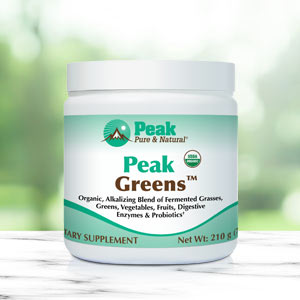Get Easy Health Digest™ in your inbox and don’t miss a thing when you subscribe today. Plus, get the free bonus report, Mother Nature’s Tips, Tricks and Remedies for Cholesterol, Blood Pressure & Blood Sugar as my way of saying welcome to the community!
Pain-relieving foods your joints will love

Whether you are a runner, a weight lifter, a CrossFitter, a moderate bike rider, or a weekend warrior, joint pain can affect your performance and your enjoyment. You can tackle this challenge by selecting from a wide variety of oral and topical anti-inflammatory and pain medications, injections, and natural supplements or signing up for physical therapy. You also can choose foods that help reduce joint pain.
Whenever joint point is mentioned, a number of conditions and situations can cross your mind. Whether its osteoarthritis (the most common form of arthritis, affecting more than 27 million Americans alone), rheumatoid arthritis, bursitis, gout, strains, sprains, or injuries related to overuse or exercise, one thing is certain: joint pain is extremely common. A national survey found that knee pain is the most common type of joint pain, followed by shoulder and hip pain.
I’m not saying that eating certain foods will completely eliminate your joint pain. However, if you choose foods that can reduce pain and discomfort in your joints and avoid those that promote inflammation, you could go a long way toward improving your quality of life and your ability to participate in the activities you enjoy the most.
Dark leafy greens help protect against inflammation.
Fill you plate with dark leafy greens such as collard greens, mustard greens, kale, spinach, Swiss chard, and turnip greens. All of these vegetables harbor flavonoids, carotenoids, vitamin C, and potent antioxidants that protect against inflammation.
Except for spinach, most of these dark leafy greens are best steamed or sautéed. Serve with drizzled olive oil and you will get extra anti-inflammatory protection. You can also add dark leafy greens to your juicing and smoothie recipes.
Fish and seafood help with the pain.
The omega-3 fatty acids in fish and seafood are valued for their inflammation-fighting abilities. This is in contrast to the omega-6 fatty acids that dominate many popular American foods, including meat, most vegetable oils, and processed foods. These foods should be avoided or consumed only in limited quantities.
A number of fish and seafood options are excellent to very good sources of omega-3s, including salmon, tuna, sardines, herring, trout, and mussels. Of these, the most environmentally sustainable are mussels. Enjoy these foods two to three times a week.
Garlic may be better than ibuprofen.
This pungent vegetable has demonstrated again and again how effective it can be as an anti-inflammatory agent. In the laboratory and in animal studies, garlic has worked like ibuprofen (a nonsteroidal anti-inflammatory drug, or NSAID) by turning off pathways that result in inflammation. Researchers now know that there are at least four sulfur-containing substances in garlic and how they work their anti-inflammatory “magic.”
In an animal study that compared use of aged black garlic versus raw garlic extract, researchers found that both were effective in reducing inflammatory factors. However, the aged black garlic was a “more promising nutraceutical or medicinal agent to prevent or cure inflammation-related diseases.”
If you want to reap the most health benefits from garlic, slice, chop, mince, or press it raw. These activities break the cells and release its health-promoting properties, alliin and alliinase, which make contact and form allicin. However, allicin needs time to form, so let cut raw garlic sit for 10 minutes before eating or cooking it. Then eat it raw or add it to your recipe for cooking.
Ginger is a powerful antioxidant.
This natural remedy for colds, upset stomach, and high blood pressure also packs a super anti-inflammatory punch. Numerous studies have demonstrated the inflammation-fighting and antioxidant powers of ginger, and the component credited with these properties is called 6-gingerol. Another anti-inflammatory component, zingerone, also has been identified as having an ability to reduce inflammation by suppressing the activity and production of certain factors in the body.
Ginger is available fresh, in powdered form, and as a tea. Enjoy ginger freshly grated on vegetables or salads or added to stir-fry dishes; ground ginger can be mixed into smoothies, the batter of baked goods, or stirred into soups. Ginger tea is served both hot and cold.
Note: Because ginger can thin the blood, anyone who is taking blood thinners should talk to their healthcare provider before using this spice.
Mushrooms should be on your joint food shopping list.
Several edible mushrooms have been studied for their ability to fight inflammation. White and brown button (Agaricus bisporus), shiitake (Lentinus edodes), enoki (Flammulina velutipes) and oyster (Pleurotus ostreatus) mushrooms were tested for their anti-inflammatory activity by an Australian team. All of the mushrooms showed anti-inflammatory activity when raw, but they lost some (but not all) of their potency when they were heated. In a recent (2015) study of whole dried shiitake mushrooms consumed by healthy adults, the authors found a decline in C-reactive protein, which “suggested lower inflammation.”
Both raw and cooked mushrooms are easily added to vegetable and grain dishes, stir-fry, soups, stews, and sandwiches. Grilled mushrooms are a favorite at BBQs, especially portobellos.
Olive oil is your joints best friend.
The anti-inflammatory properties of olive oil are credited to oleic acid and omega-3 fatty acids. Both of these substances are antioxidants and are capable of fighting inflammation and disease-causing free radicals. Olive oil has yet another anti-inflammatory component: oleocanthal, which prevents production of enzymes that promote inflammation. According to Paul Breslin, PhD, who co-authored the study of this phenomenon, “By inhibiting these enzymes, inflammation and the increase in pain sensitivity associated with them is dampened.” Oleocanthal also has been found to be effective in managing rheumatoid arthritis.
To increase the amount of olive oil in your diet, drizzle it over veggies. Make your own salad dressing using three parts olive oil to one part vinegar or lemon juice and then adding your favorite herbs and spices. An olive oil and herb mixture is also a good substitute for butter on bread.
Sweet potatoes are good news for joints!
These golden tubers are an excellent source of nutrients known to fight inflammation; namely, vitamins C and E, which are powerful antioxidants, and the carotenoids alpha-carotene and beta-carotene. Specifically, researchers have found that carotenoids can inhibit the production of inflammatory substances (e.g., cytokines such as prostaglandin E2 and interleukin-8). Along with sweet potatoes, other orange foods rich in these anti-inflammatory factors include apricots, cantaloupe, carrots, and pumpkin.
Overall, a Mediterranean-type diet is one that focuses on foods that fight inflammation and/or don’t promote it. That means your diet should be high in fruits, vegetables, beans and legumes, nuts, fish, and olive oil, while significantly limiting or avoiding foods that promote inflammation and joint pain–red meat, saturated fats, sugar, and dairy products.
Editor’s note: Did you know that when you take your body from acid to alkaline you can boost your energy, lose weight, soothe digestion, avoid illness and achieve wellness? Click here to discover The Alkaline Secret to Ultimate Vitality and revive your life today!















